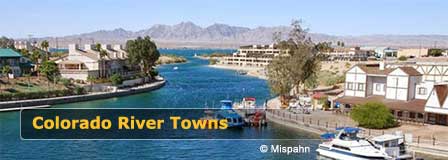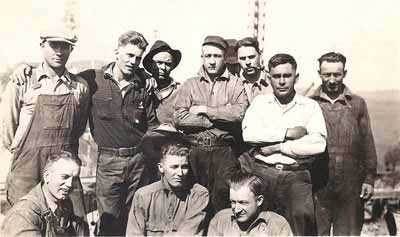Hoover Dam
Men, Women & Children of Hoover Dam
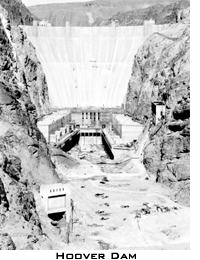
Lest We Never Forget. After almost 70 years, Hoover Dam is still considered an engineering wonder. It rose from the almost impossible to a resounding success that dramatically enhanced the quality of life for millions and millions upon millions more in future lifetimes. The unharnessed power of the Colorado River became mastered. Much needed water was funneled to fertile but arid lands. Agricultural production suddenly blossomed and will flourish for infinite generations. Hydroelectric power is an economical source that will supply ample demands for lifetimes. And a scenic by-product of Hoover Dam is Lake Mead a water-lovers spectacle that is enjoyed by millions every year.

But the real story behind Hoover Dam is the thousands who built it and the families that endured the living hell to bring it all to realty. In particular those that died on the job or resulting from the harsh conditions.
Construction of Hoover Dam would not begin until April of 1931, but men and families began drifting into Las Vegas (30 miles from the dam site) in early 1929 in hopes of dam construction employment. After the Stock Market Crash of 1929 and the Great Depression, an avalanche of unemployed poured in for a limited number of Hoover Dam construction jobs.. Many came with life’s possessions, wives, children and little to no money.

In those days, Las Vegas was a small desert outpost and not nearly prepared for the thousands of “new residents” that had no choice but to live in squalid, tightly compacted tent cities. Dam construction was months away. There was no guarantee of employment, but many had nowhere else to go and those that did had no money to get there. Through the benevolence of many citizens of Las Vegas that provided food, care and clothing, the migrants managed to survive very tough conditions.
Prompted by the Depression and mounting stress on future dam workers and the town of Las Vegas, the government pushed the construction to begin six months early. Although the federal government had begun planning for housing and human welfare infrastructure, the quickened construction schedule left no time for barracks or housing to be built.
Living conditions compared to Las Vegas would become worse for many workers. Since most people equated being close to the dam site with the success of getting a job, most decided to live at the job site. Some who had transportation stayed in Las Vegas to make the daily commute through 30 miles of the dusty and bumpy Boulder road.
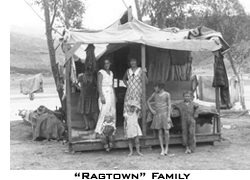
The infamous community of “Ragtown” on the floor of Black Canyon next to the Colorado River was born. The makeshift shantytown consisted of tents, cardboard boxes, tin scraps and anything else that could serve as shelter against the scalding heat of summer and freezing nights of winter. Ragtown swelled to 1400 people and ballooned to 5,000 men, women and children.
The first summer of 1931 in Ragtown was beyond harsh, it was devastating. With average July temperatures of 116 degrees and approaching 130 degrees on the floor of Black Canyon combined with swirling dust and no natural shade, over 25 men, women and children died in that first June-July period of heat conditions.
Although clouded with sediment, the ever flowing water from the Colorado River was sufficient for bathing. The women would drape wet cloth over baby cradles to cool them. Fresh milk was no option and canned food was the only way to avoid spoilage.
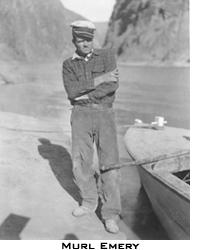
A man by the name of Murl Emery and his family provided compassionate relief. They opened a store in Ragtown for dam workers and families with food and supplies trucked from Las Vegas. With low hourly labor rates of 50 cents an hour, Murl Emery permitted Ragtown residents to pay what they could afford. Credit was issued on the honor system and only one person ever failed to pay his debt. That was because the customer had died. With no help from the government or the contracted dam building firm, it was Murl Emery and family that provided some relief in form of food and tangible needs.
Times were tough and harsh on everyone, but especially on the blacks. In the 1930s racism and segregation was rampant and the attitude of the Six Companies, Inc. who had been awarded the building contract of Hoover Dam was no exception. Many blacks came to Las Vegas and Black Canyon with hopes of finding dam building jobs and most were turned away because of racism.
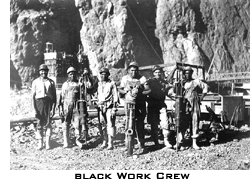
The federal government mandated that Six Companies, Inc. hire more black workers but made only a token effort by hiring less than 30 blacks. They were given only the demeaning jobs such as debris cleanup and other labor functions undesired by white workers. To compound the difficulty facing the black workers, they weren’t permitted to live in Ragtown and had to commute daily from Las Vegas. Six Companies, Inc. also had employment practices that expressly restricted the hiring of “chinamen”.
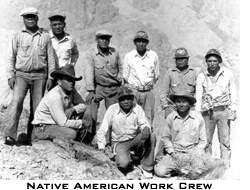
In spite of an abundance of Native Americans in the region just a few were ever hired. All of them were given the most dangerous of jobs, which was “high scaling” dangling precariously on the canyon walls while clearing obstructions for the eventual joining of dam ends to those canyon cliffs. However, they were paid a higher hourly rate versus general laborers and were permitted to live in Ragtown and eventually in Boulder that became a town for dam workers.
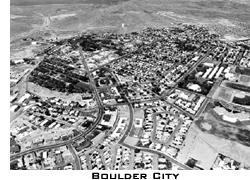
The federal government had already begun plans to build a dam workers town on federal land above and close by Black Canyon where Hoover Dam would stand. They pushed forward to quickly achieve workers relief with barracks, housing, stores and general public welfare with churches and schools for the children. That town which became Boulder City, Nevada was completed in 1932. Boulder City thrives today as a quiet town that overlooks Lake Mead and rides high above Hoover Dam. Some that worked in those horrid conditions of Ragtown still reside in Boulder City and many of the “Ragtown Children” are actively involved in the community that provides some of the most rewarding quality of life in America.
Photos compliments of: Boulder City Museum
Related Hoover Dam Interest
Hoover Dam
Building Hoover Dam
Hoover Dam Diversion Tunnels
Hoover Dam High Scalers
Hoover Dam Historic Photos
Hoover Dam Map
Hoover Dam Men
Hoover Dam Pictures
Along The Colorado River
Colorado River Lakes
Lake Powell
Lake Mead
Lake Mohave
Lake Havasu

